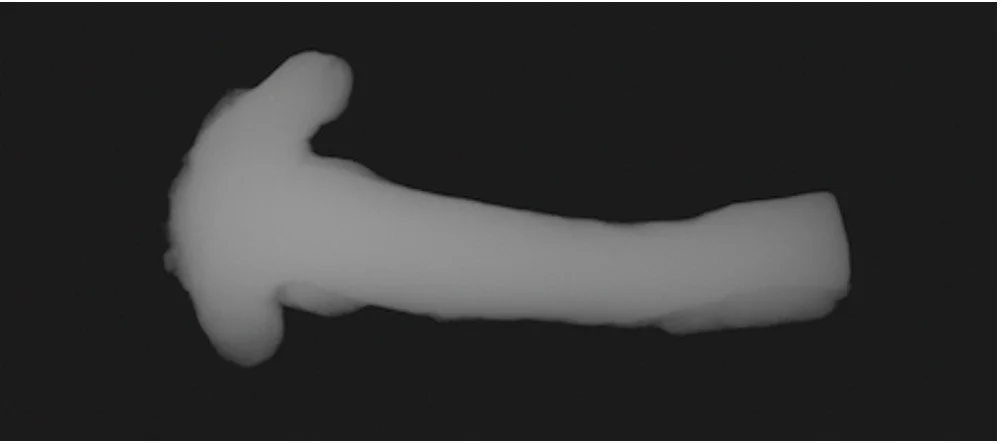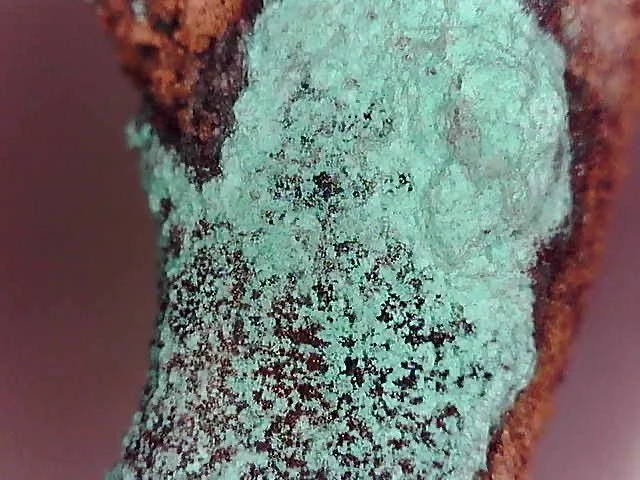Archaeological Bronze Treatments
Institution: Petrie Palestine Collection
Materials: Copper Alloy
Bronze Nail
(EXI.61/19)
Project Duration: 15 hours
Dimensions: Length - 38 mm; Head Width - 17.4 mm; Diameter of Body - 7.8 mm
Object Description: This object is a bronze nail found at Tell Fara (Area E, level 389’ 10”) by Flinders Petrie during his excavations of the site between 1928-1929 (Figure 1). Petrie completed excavations on both the north and southend of the sites during this time as seen in Figure 1. The nail was designed to have a wide head attached to a cylindrical body and dates to the late Bronze Age (3300 - 1200 BCE). Nails such as this one would have been used for the construction of objects, furniture, and tools (Petrie, 1934 and Petrie, 1932). As seen in Figure 2, the x-radiography of the object indicates it is mostly intact with evidence of deposits along the body
Condition:
The object was structurally stable with no severe flaking corrosion. Burial deposits and light corrosion were present on all surfaces. Active bronze disease was present throughout the central body and on the head of the nail as well. These locations produced a light blue corrosion that had a powdery texture when abraded. Overall, the corrosion and burial deposits distorted the topography of the object. No exposed cuprite layers present.
Treatment:
All burial deposits and corrosion products were removed under optical microscope (magnification x10) (Scott, 2002). No mineralised organic products were present on the surface. A large amount of active bronze disease was present only the edge of the spearhead and was more severe than initially anticipated. All corrosion was removed using bamboo skewers, thorns, and a 15 blade scalpel.
Once all cleaning was completed, the object was immersed in BTA (benzotriazole) concentration 3% w/v ethanol solution overnight in the fume cupboard. The object was removed afterward and allowed to dry for one hour. The next day, the object was coated in 3 separate coats of 1.5% PB44 in 50:50 acetone/IMS with fumed silica. Each coat was allowed to dry for 15 minutes before the next coat was applied.
Bronze Spearhead
(EXII.220.1)
Project Duration: 22 hours
Dimensions: 120 x 21 x 4mm
Object Description: This spearhead has a long, rectangular shape with a small tapered point. The piece was excavated in Area J, level 740’ of Tell El ‘Ajjul and dates to the Middle Bronze Age. X-ray indicates that the object is mostly intact, with slight material loss along edges and one larger loss due to active bronze disease. The spearhead has a long narrow blade, ending in a rounded tip, with thickened broad flat midrib down length on either side of body. Rounded shoulders on tapering tang with rectangular section.
Condition:
The object is structurally stable with no severe flaking corrosion. Burial deposits and light corrosion are present on all surfaces. Active bronze disease is present on the edge of the central body. These locations have produced a light blue corrosion that is has a powdery texture when abraded. Darker green corrosion is present near the edges of the object. Overall, the corrosion slightly distorts the topography of the object. No exposed cuprite layers present.
Treatment:
All burial deposits and corrosion products were removed under optical microscope (magnification x10) (Scott, 2002). No mineralised organic products were present on the surface. A large amount of active bronze disease was present only the edge of the spearhead and was more severe than initially anticipated. All corrosion was removed using bamboo skewers, thorns, and a 15 blade scalpel.
Once all cleaning was completed, the object was immersed in BTA (benzotriazole) concentration 3% w/v ethanol solution overnight in the fume cupboard. The object was removed afterward and allowed to dry for one hour. The next day, the object was coated in 3 separate coats of 1.5% PB44 in 50:50 acetone/IMS with fumed silica. Each coat was allowed to dry for 15 minutes before the next coat was applied.







